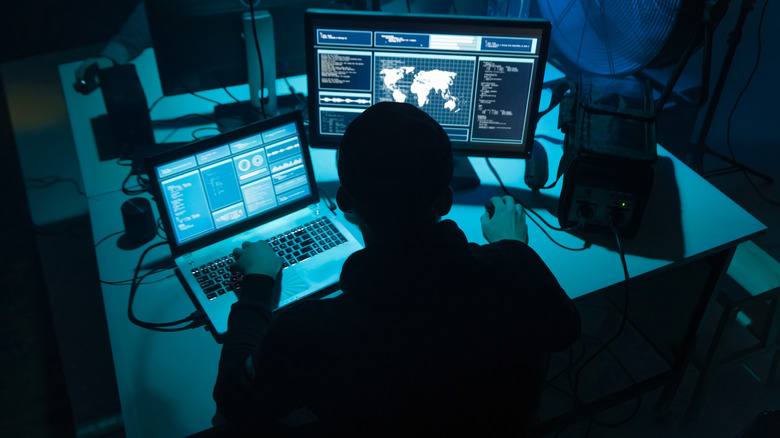How A Computer Virus Might Have Saved The World From Nuclear Attack
When people see their computer has a virus, it usually means big trouble. Okay, generally, any kind of virus is bad news, but computer viruses have consequences as far-reaching as the biological kind. Hackers can gain access to your personal information and your network, making it easier to leak or steal important data.
But in 2010, a computer virus ended up doing something unprecedented; it did something good. It stopped a possible nuclear attack.
That year saw the appearance of Stuxnet, a 500-kilobyte worm that attacked several computers all over the world, wrote Spectrum. At first, it seemed like all other computer viruses. Stuxnet hit networks and crippled systems. Stuxnet though was not like other malware. Stuxnet spread haphazardly, which is usually standard, but it soon became apparent it targeted one type of system. It only affected computers running on Microsoft Windows and the Siemens Step7 program.
Unlike other computer viruses, Stuxnet rarely impacted home users. It only hit industrial sites, reportedly including Russian nuclear power plants and an Iranian uranium enrichment plant. Business Insider said Stuxnet attacked the Natanz nuclear facility and completely ruined its centrifuges. The virus made the centrifuges run so fast that its lifecycle is greatly reduced. Another attack, one that was not made public until years after the first attack was to create a blueprint of the plant.
Who benefits from this? If you guessed governments, congratulations. As The New York Times reported, Stuxnet was created by the United States and Israel, a project codenamed Operation Olympic Games.
No one saw the Stuxnet virus coming
Both Israel and the United States had strong concerns about possible nuclear power proliferation in countries like Iran. The New York Times said the project began under the Bush administration but was deployed under Obama's tenure. The goal was to strategically weaken Iran's nuclear program. At first, there was some hesitancy, but it soon became clear the operation needed to continue.
It all happened in 2010, said Wired. After inspectors from the International Atomic Energy Agency (IAEA) noticed centrifuges at Natanz were failing at a fast rate. The IAEA found out that even Iranian engineers couldn't figure out why it was happening. It would've been left as a curious isolated issue, but five months later, Belarussian security experts were called in to investigate the same problems found traces of a virus.
Stuxnet was dubbed the world's first digital weapon because it physically destroys its targets instead of just harvesting data from its targets.
Stuxnet made its way to Natanz via an employee's USB drive. After all, computers controlling the centrifuges are air-gapped, meaning they're not connected to the internet. The virus first hit the computers of five other companies connected to the plant, so employees constantly used thumb drives.
At the time the virus deployed and began attacking its computers, Iran was experiencing political turmoil after accusations of foul play during its elections. While people focused on politics, no one noticed that Stuxnet was worming its way into the system, ready to cause chaos.
The virus was in the thumb drives
Once the employee plugged in the thumb drive, Stuxnet entered the computer via the autorun feature of Windows operating systems. Wired revealed that the first two companies, Foolad Technic and Behpajooh, had been hit within a few days of each other. Both firms had some connection with Natanz. Then other companies followed, and eventually, it reached the nuclear facility, though no one can pinpoint when the virus entered.
Soon after, engineers at Natanz began noticing the output of its centrifuges started falling and many had to be shut down. Stuxnet had struck and caused the machines to run faster than usual by increasing pressure on the centrifuges.
Business Insider noted there were actually two versions of Stuxnet going around, but it wasn't until the second one, the one that occurred at Natanz, was discovered that cybersecurity experts realized there was a first one in the first place.
Iran, as expected, denied that Stuxnet had impacted its network. But it was clear, something had affected the Natanz uranium enrichment facility. By November in 2010, Natanz only had 3,936 centrifuges running, a drop of 984 in just five months. Stuxnet was able to slow down Iran's nuclear ambitions, The New York Times said, at least for a short amount of time.
Stuxnet was successful. And even though Microsoft has patched some potential exploits for the virus, according to ZDNet, it doesn't mean the United States and its allies have given up using computer viruses to disrupt countries' nuclear capabilities.


